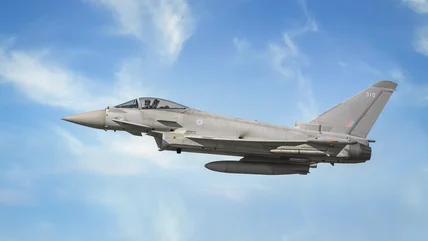In the high-stakes world of military aviation, the engines that power fighter jets are just as important as the pilots who fly them. On September 2, 2024, we dive deep into the world of Rolls-Royce, one of the most renowned names in aerospace engineering. Rolls-Royce engines are the hidden force behind some of the most advanced fighter jets in the world. But which ones? Let’s explore this intriguing question.
The Legacy of Rolls-Royce in Fighter Jet Engines
Rolls-Royce has a storied history in the aerospace industry. It’s a name synonymous with luxury cars, but its influence in the skies is even more profound. For decades, Rolls-Royce has been designing and manufacturing engines that power some of the most formidable fighter jets in military service. The company’s expertise in jet propulsion has made it a trusted partner for air forces around the world.
One of the earliest examples of Rolls-Royce’s contribution to military aviation is the Merlin engine, which powered the iconic Spitfire during World War II. Since then, the company has continued to push the boundaries of aviation technology. Today, Rolls-Royce engines are found in a range of modern fighter jets, combining reliability, power, and advanced engineering.
Fighter Jets Powered by Rolls-Royce Engines
1. Eurofighter Typhoon: The Pride of Europe
One of the most famous fighter jets to feature Rolls-Royce engines is the Eurofighter Typhoon. This multi-role fighter jet is a product of collaboration between several European nations, and it serves as the backbone of many European air forces.
The Typhoon is powered by two Eurojet EJ200 engines, which are co-developed by Rolls-Royce. These engines are known for their exceptional thrust-to-weight ratio, providing the Typhoon with unmatched agility and speed. The EJ200 engines allow the Typhoon to reach speeds of over Mach 2, making it one of the fastest fighter jets in service today.
The Typhoon is not just fast; it’s also incredibly versatile. It can perform air-to-air combat, air-to-ground strikes, and reconnaissance missions. The engine’s efficiency and reliability are key factors in the Typhoon’s ability to carry out such a wide range of missions.
2. Lockheed Martin F-35B: A Stealthy Powerhouse
Another prominent fighter jet using Rolls-Royce technology is the Lockheed Martin F-35B, the short takeoff and vertical landing (STOVL) variant of the F-35 Lightning II. The F-35B is unique among the F-35 variants because it can take off and land like a helicopter, thanks to the Rolls-Royce LiftSystem.
The LiftSystem is a revolutionary piece of engineering that allows the F-35B to operate from shorter runways and even aircraft carriers without catapults. This system includes a powerful lift fan and a thrust vectoring nozzle, both developed by Rolls-Royce. When the F-35B needs to hover or perform a vertical landing, the LiftSystem provides the necessary vertical thrust.
The F-35B’s versatility is unmatched, making it a crucial asset for the U.S. Marine Corps, the Royal Navy, and other allied forces. The Rolls-Royce LiftSystem is a game-changer in modern military aviation, allowing the F-35B to operate in environments that would be challenging for other fighter jets.
3. Boeing Harrier II: The Vertical Takeoff Legend
The Boeing AV-8B Harrier II, a fighter jet capable of vertical takeoff and landing (VTOL), also benefits from Rolls-Royce engine technology. The Harrier series is legendary for its VTOL capabilities, allowing it to take off and land in areas with limited space, such as improvised airstrips or aircraft carriers.
The Harrier II is powered by the Rolls-Royce Pegasus engine, a unique engine design that incorporates vectored thrust technology. This technology allows the jet to direct its thrust downward for vertical takeoff and landing or backward for conventional flight.
The Harrier II has been in service since the 1980s and has proven its effectiveness in various conflicts. It is particularly valued by the U.S. Marine Corps and the Royal Navy for its ability to provide close air support to ground forces and operate from small, forward-deployed bases.
Rolls-Royce’s Future in Fighter Jet Engines

Rolls-Royce continues to be at the forefront of military aviation, working on new engine technologies that will power the next generation of fighter jets. The company is investing heavily in research and development to create engines that are not only more powerful but also more fuel-efficient and environmentally friendly.
One of the most exciting projects Rolls-Royce is involved in is the development of the engines for the Tempest, a next-generation fighter jet being developed by the United Kingdom in collaboration with Italy and Sweden. The Tempest is expected to enter service in the 2030s, and it will be equipped with cutting-edge technologies, including artificial intelligence and directed energy weapons.
The engines for the Tempest will need to meet the demands of this advanced platform, providing high levels of thrust while also being able to generate significant electrical power to support the jet’s systems. Rolls-Royce is expected to play a key role in this ambitious project, continuing its legacy of innovation in military aviation.
Conclusion
Rolls-Royce engines are the unsung heroes of the skies, powering some of the most advanced and capable fighter jets in the world. From the Eurofighter Typhoon to the F-35B and the Harrier II, Rolls-Royce’s engineering excellence ensures these jets perform at their peak, protecting nations and keeping pilots safe.
As military technology evolves, Rolls-Royce remains at the cutting edge, developing the engines that will power the fighter jets of the future. Whether it’s through new engine designs for the Tempest or other next-generation platforms, Rolls-Royce is set to continue its legacy as a leader in aerospace engineering.
So, the next time you see a fighter jet soaring through the skies, remember the power and precision behind it. Chances are, a Rolls-Royce engine is at its heart, driving it to perform incredible feats in defense of freedom.
